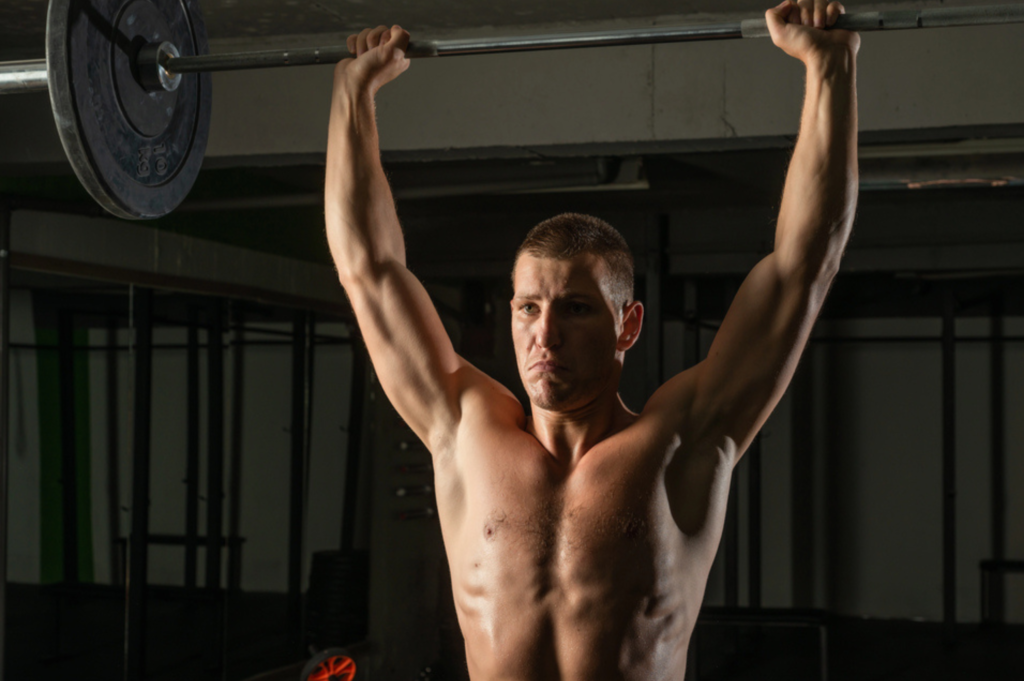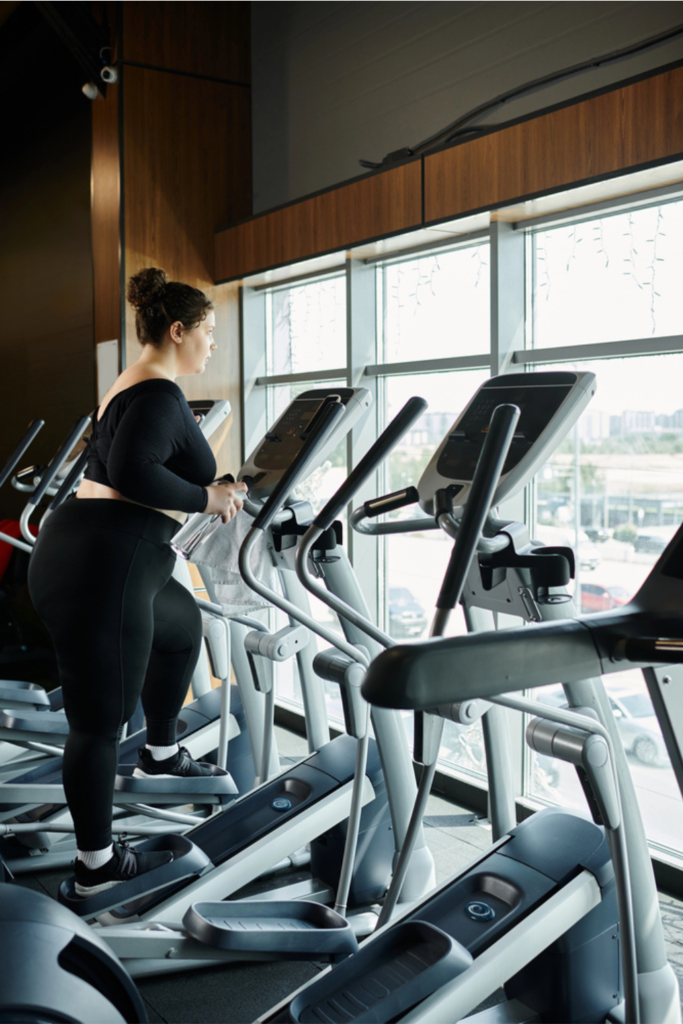
For a long time, cardio has been promoted as the primary form of exercise for fat loss. On the other hand, strength training has been promoted as the foundational form of exercise for building muscle.
Strength training is best for both fat loss and muscle building. Hard to believe, but cardio isn’t necessary to lose fat.
This article will address why strength training is better than cardio for fat loss.
Strength Training Increases Metabolism
Strength training builds muscle, which boosts metabolism. When you have a higher metabolic rate, you burn more calories at rest.
You don’t burn many calories from structured exercise. Majority of the calories you burn are from your basal metabolic rate or your resting metabolic rate.
God forbid you were to become bed-ridden; your body would require a certain number of calories just to keep you alive.
Strength Training Ensures You’re Losing Pure Body Fat
Assuming you are maintaining a caloric deficit, strength training will guarantee the weight you lose is pure body fat.
If you only reduce calories and do a bunch of cardio, you will lose fat, but you’ll also lose a significant amount of muscle.
Obviously, this is bad for your metabolism and your physique aesthetic.
Strength training is even more important than the amount of protein you’re consuming. Protein is not your highest priority when it comes to fat loss.
The calorie deficit is your highest priority. The second highest priority is strength training; No.3 would be protein.
If you want to know what all the priorities are for fat loss, read this article, Top 7 Priorities for a Successful Fat Loss Plan.
Strength Training is Better for Body Re-composition

You can lose weight through a caloric deficit and cardio, but without strength training, you won’t improve your body composition.
You can lose 20-30 lbs. of scale weight, but you won’t really look like you lost weight. You would just be a smaller version of yourself.
In other words, you won’t look significantly better, and you’ll still have too much body fat for your liking.
With strength training, you can lose a lot of fat without losing a lot of weight. This is especially true if you’re new to resistance training.
As a new lifter, you’re the most primed for muscle growth that you’ll ever be. Therefore, you can see a 6% plus reduction in body fat within the first year of lifting.
This is possible without having to reduce much weight on the scale.
Building muscle in a caloric deficit slows down your rate of weight loss. This changes your body composition and makes fat loss more permanent.
We are talking about amazing stuff here.
Relative Strength is the Best Indicator of Body Composition
High levels of relative strength are the best indication of great body composition.
You can get an idea of someone’s physique development without even knowing what the person looks like.
If you’re on the phone with someone and he or she tells you they can
- Do pushups with one arm
- Perform Handstand pushups
- Do chin-ups with one arm
- Perform pistol squats
- Bench press more than double their bodyweight
- Perform chin-ups with 100 pounds of external weight attached
- Barbell Squat more than double their bodyweight.
At that point, you already know the person has a lot of muscle and a low level of bodyfat.
Unfortunately, you’re not going to achieve these lifting metrics if you carry too much fat.
This is why it’s better to focus on relative strength as opposed to absolute strength.
How much total weight you can lift isn’t as impressive as how weight you can lift relative to your bodyweight.
Calories Burned from Weight Training Vs Calories Burned from Cardio
Energy expenditure from weight training and cardio are vastly different. Weight training burns more calories at rest. Cardio burns more calories per session.
To put things into context, you might burn 200 calories from a 1-hour resistance training session.
This is dependent on factors such as:
- Bodyweight
- Height
- Gender
- Repetitions
- Rest Periods
Now compare that to a 1-hour intense cardio session. You might burn 600 calories in that time window.
Clearly, cardio burns more calories than weight training. However, that doesn’t mean cardio is better for fat loss than lifting weights.
With cardio, you’re burning calories on the spot. When it comes to strength training, not only are you burning calories on the spot, but you’re burning calories outside of formal exercise.
Truthfully, it’s not effective to track how many calories you burn per day. Reason being your body finds a way to conserve over 50% of the calories you burn from structured activity.
You can run on the treadmill for an hour and burn 600 calories, but your body finds away to conserve over 300 of those calories.
You want to track how many calories you’re taking in. You don’t want to track how many calories you’re expending.
How Cardio Can Affect Muscle Gain and Fat Loss

The effect cardo has on body re-composition can be positive or negative depending on the context of the cardio.
Recovery
When you’re in a caloric deficit, you are also in a recovery deficit. Your body is not going to optimally recover from intense workouts when your calories are low.
When you add cardio on top of that, you further complicate the recovery process. This is especially true if you put yourself in a large caloric deficit.
Let’s say you’re dieting with the intentions of losing 1.5 – 2 pounds of bodyfat per week. You are putting yourself in a 750 – 1,000 calorie daily deficit from your maintenance.
That is a very challenging deficit to maintain.
Adding intense cardio can put you in a bigger deficit than you need to be in. Not only can this cause muscle loss, but it can increase your risk of injury.
Appetite
You may find that cardio increases your appetite. The last thing you want is an uncontrollable appetite when you’re trying to lose weight.
A lot of people get a false sense of entitlement after they complete an intense cardio session. They think they can go home and eat whatever passes their faces because they’ll just “burn” it off.
Truth is you will most likely overeat, sabotage the workout, and gain weight.
Some people might not have this issue when it comes to cardio. However, if you are one of those people, leave cardio out of your programming.
Sleep
The fitness community doesn’t talk about this enough, but too much cardio can hurt your sleep quality.
Even if you can manage a large energy deficit, resistance training, cardio, and appetite, your sleep might decline.
You may experience a lot of insomnia because you’re in too big of a caloric deficit due to cardio.
At that point, the stress hormone cortisol goes up and your ability to maintain lean body mass goes down.
You can circumvent that by either cutting out cardio completely or increasing your caloric intake to compensate for the calories burned from cardio.
If it’s unclear why sleep is so important for your fitness goals, read this article How Sleep Impacts Fat Loss and Muscle Growth.
Knowing When Cardio is Having a Positive Impact on Your Fitness
To summarize this section of the article, you can test the effectiveness of cardio on yourself.
If you can:
- Consistently make strength gains in the gym
- Control your appetite in a calorie deficit
- Still sleep well at night
- Lose purely fat on the scale
Then the cardio is having a positive impact.
The Best Exercise that Complements Strength Training
Walking is the best exercise that complements strength training. It is closely related to cardio, but it’s not quite cardio.
With walking, you’re promoting what’s called NEAT. This stands for Non-Exercise Activity Thermogenesis.
NEAT is the calories you burn passively.
You can unintentionally burn calories:
- Roaming around the shopping mall
- Taking the stairs to the office instead of the elevator
- Doing chores around the house
General movement throughout the day burns calories.
Where walking shines is:
- You can walk a lot without fatigue
- You can walk in segments throughout the day
- You burn a moderate amount of calories without impacting your appetite.
Another great thing about walking is its muscle-sphering. This means neither muscle nor recovery is negatively impacted by walking.
If you’re unsure how many steps you need, read this article, How Many Steps You Need to Walk a Day?
Conclusion
Key points of this article are:
- Make strength-training the foundation of your exercise program.
- Use walking as supplemental activity for strength training.
If you pair these two things with a caloric deficit, fat loss should be smooth sailing for you.
